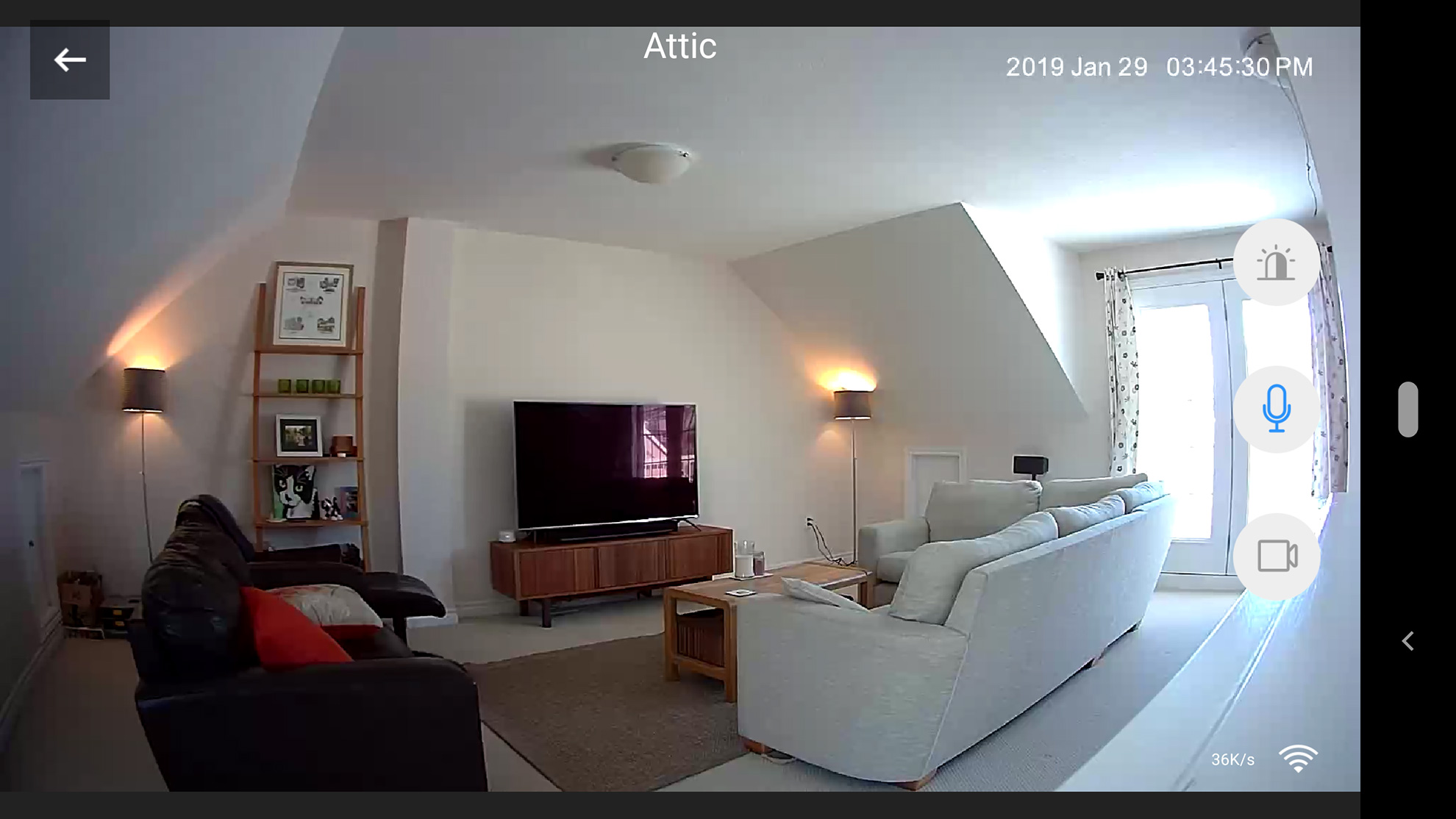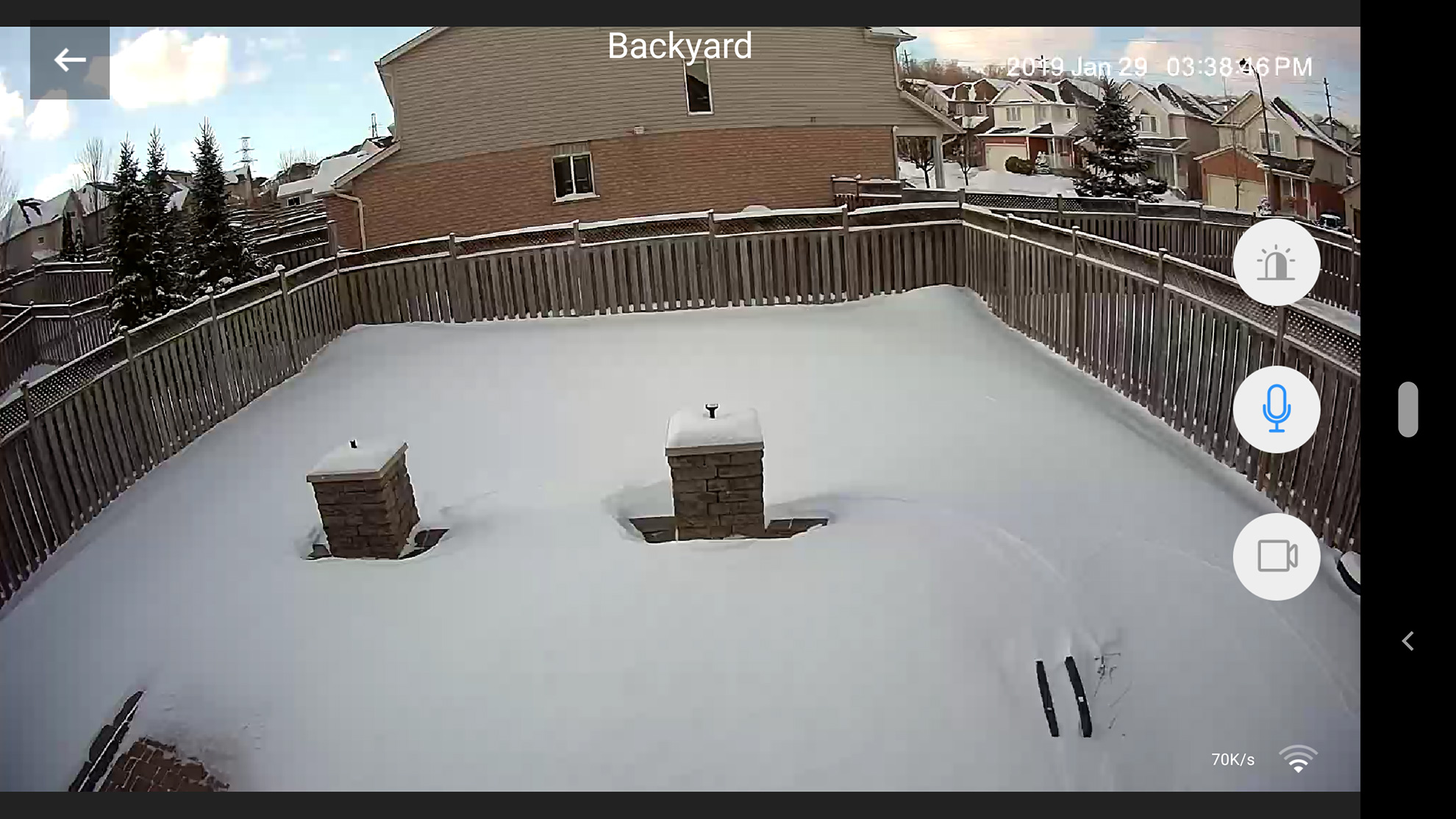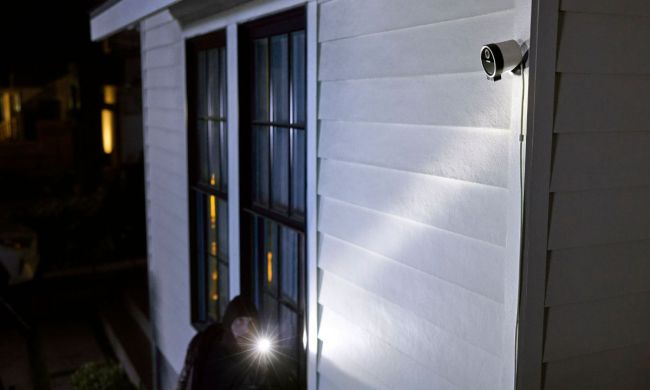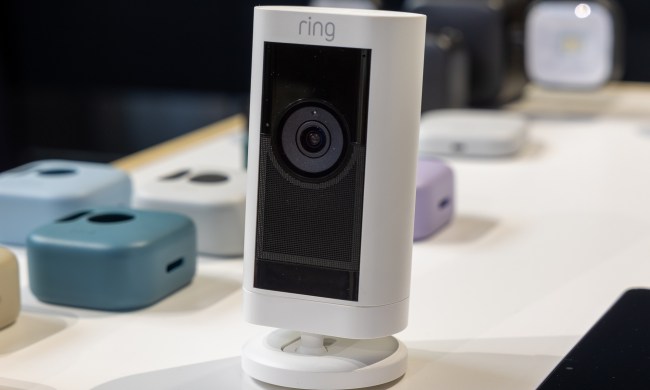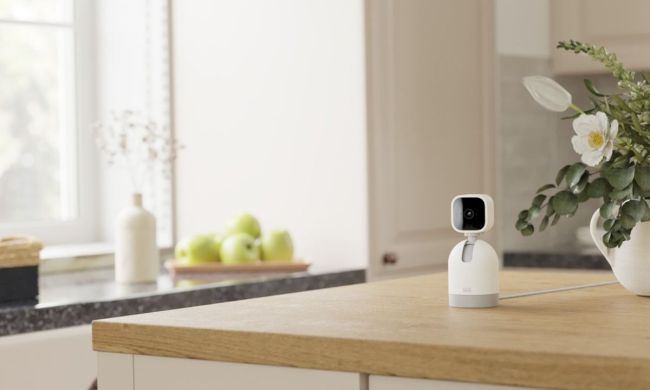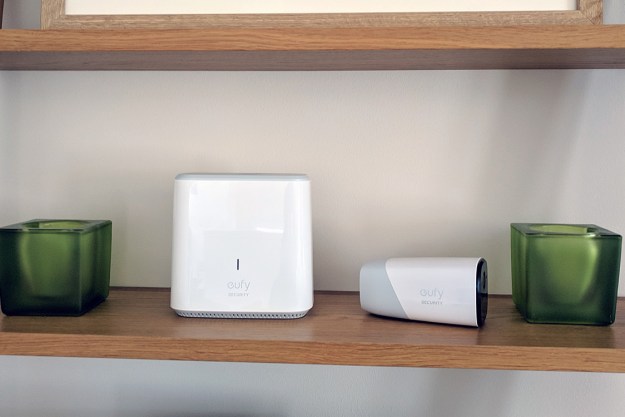
“EufyCam is a solid, but spendy, debut that isn’t yet the complete package”
- Weatherproof, wireless outdoor/indoor camera
- Up to a year’s operation on a single charge
- Decent image quality
- Facial recognition that works
- HomeBase security siren with local SD storage and charging boost
- Siren lacks a real punch
- AI features could go further
- Promised IFTTT, Google Assistant and Alexa support a work in progress
- More expensive than most competitors
The weatherproof and wire-free Arlo smart cam blazed a trail in 2014, combining security and simplicity in a cute, convenient package. Several generations later and with a slew of new lines on the way, Arlo remains one of our favorite outdoor cameras. It’s taken competitors a few years to figure out a response, but they’re coming on strong.
Eufy may be an unfamiliar name, even to ardent smart home followers, but it’s the subsidiary under which popular accessories brand Anker is charging into the smart home market. Robovacs, light bulbs, smart plugs, baby
The company’s outdoor smartcam, EufyCam, arrived on the market following a successful $3.1 million Kickstarter campaign. Priced at $499 for a 2-camera kit and HomeBase hub/siren, it’s a close competitor to the $449 Arlo Pro 2, with the promise of added smarts.
It’s all about versatility
Fully wireless, EufyCam can be installed indoors or outdoors, with an IP67 rating that ensures water resistance and operation in temperatures between -4 and 122 degrees Fahrenheit (-20 to 50 degrees Celsius). That’s sturdy enough for all but the most extreme climates. At the time of our review, with winter temperatures plummeting to -8 F (-22 C), we were pleased to see EufyCam tackle the elements with ease.

Each camera packs a sensor recording 1080p HD video and a rechargeable battery supporting up to a year’s operation on a single charge. Eufycam’s HomeBase hub also includes a battery backup lasting up to 10 hours in the case of a power cut, plus a 100 dB siren that promises to wake the household should an intruder be detected.
Alongside these relatively standard features, Anker is hoping enhanced artificial intelligence features can differentiate EufyCam from more established competitors. They include human detection (ensuring blowing trees, passing cars and your pet chinchilla won’t set off motion alerts), facial-recognition, and integration with the usual array of smart services like Google Assistant, Amazon Alexa and IFTTT.
Attractive, robust security system
Visually, EufyCam lacks the cuteness, compactness and curviness of Arlo, but Anker’s designers have done a solid job of crafting a good-looking smartcam. It’s a little long, but EufyCam’s two-tone matte/gloss plastics add a certain swagger. In hand, the smooth chassis feels robust and weighty. That’s most likely due to the sealed, internal battery. The camera’s only opening is a micro-USB port, used for charging and protected from the elements by a rubber seal.
EufyCam looks to be a neatly-designed, well-appointed home-security package that’ll look great inside or outside the home.
The Eufy HomeBase follows a similar aesthetic but could be mistaken for a mini kitchen toaster. It’s a little more graceful than Arlo’s hub and includes an Ethernet port for networking, PowerIQ USB port for charging cameras (and other devices, this is an Anker product, after all) plus a handy microSD slot for local video backup. In a rare show of generosity, the kit also includes a pre-installed 16GB microSD card to get you started.
Overall, EufyCam looks to be a neatly-designed, well-appointed home-security package that’ll look great inside or outside the home.
Easy setup with some light outdoor drilling required
If you’re planning to invest in a range of Eufy smart devices, note that EufyCam requires the use of a standalone app. At this point, security devices aren’t integrated in the Eufy controller app used for lighting, smart plugs, and other devices. While that’s an inconvenience, fortunately, the remaining steps to get up and running are quick and easy.
Connecting the HomeBase is a simple matter of wiring the device to your router and then following simple steps on the app. Voice prompts from the HomeBase speaker make the experience friendlier. Pairing each camera to your HomeBase is completed in seconds.
If you’re mounting EufyCam outside, you should be prepared for some light drilling to secure the included mount, screws and wall anchors, although the benefit of a wireless camera is that there are no trailing cables to clip. Internal wall mounts are also provided, but EufyCam’s magnetic rear surface can adhere directly to some metal surfaces for convenience.
While EufyCam’s camera battery supports up to a year’s use on a single charge, that relies on you selecting an Optimal Life Battery Mode, which offers 20-second recorded clips and reduced motion detection sensitivity. In Optimal Surveillance Mode, clip duration is boosted to 60 seconds, and alarms are more frequent. In this mode, Anker recommends the camera is plugged into a power outlet. That’s easy for indoor use, but outdoors, you’ll need to think through weatherproofed cabling and power termination.
Solid imaging for surveillance
In both indoor and outdoor settings, we found EufyCam’s 1080p video output to be sharp and reasonably clear. The camera manages to deliver a decent field of vision (quoted by Anker at 140 degrees, although that seems generous) without a heavy fish-eye effect. We did notice some ghosting and artifacts around objects and overexposure around windows, though – a common issue with smartcams we’ve tested previously. As you’d expect, a night-vision feature is included, and on a dark, snowy night, we were delighted with the camera’s clarity and range.
EufyCam certainly can’t match the image quality of premium outdoor cameras like Nest Cam IQ Outdoor, but it’s certainly good enough for home surveillance.
We found EufyCam did a great job at detecting motion and firing alerts almost instantaneously. With Home and Away modes available, you’re free to customize alert preferences as you wish, receiving notifications on your phone, triggering the HomeBase alarm (and accompanying alarm on your cameras) or both. However, while the HomeBase siren is certainly loud enough to wake the household in the event of a night-time intrusion, if you’re away from home, it’s no substitute for an external alarm.
Smart A.I. features offer great potential, when and if they’re finally delivered
EufyCam’s A.I. feature lineup has some room for improvement. Compared to Nest cameras, which allow you to add faces captured by your cameras to a facial recognition database, EufyCam requires you to add existing high-resolution photos from your
While EufyCam delivers the basics, several features promised on the box are simply M.I.A.
Elsewhere, EufyCam’s billed support for
Warranty information
EufyCam is supported by a one-year warranty.
Our Take
Overall, Anker has done a good job delivering an attractive, simple-to-operate smart security system, but there’s some way to go before EufyCam delivers on its promised value. While EufyCam delivers the basics, its differentiating features, notably in A.I. and third-party integration, are either nascent or completely M.I.A.
If you’re happy to pay $499 for a solid smart security system and promise of future feature development, then dive in. However, at launch, EufyCam isn’t the complete package that can knock accomplished systems like Arlo Pro 2 off its perch, nor does it compare in value when looking at cheaper systems from Ring, Abode and others.
Is there a better alternative?
The smart security market is becoming so crowded, you can take your pick from accomplished systems at a range of price points. At the top-end, the $479 Arlo Pro 2 remains a fantastic choice, but if you’re considering such a high investment, hang on for the upcoming Arlo Ultra, which boasts
How long will it last?
Anker’s new to the smart home market, but they’ve certainly invested heavily in building a comprehensive product range. We have some concerns that the company has yet to deliver all of the features promised for EufyCam, so until they do, we’d advise you to proceed with caution.
Should you buy it?
Almost $500 is a lot of money to spend on a smart home security system – particularly one that is not yet feature-complete. We look forward to seeing the Eufy range continue to evolve but, for now, Anker’s solid debut smartcam can’t quite justify its price tag.




